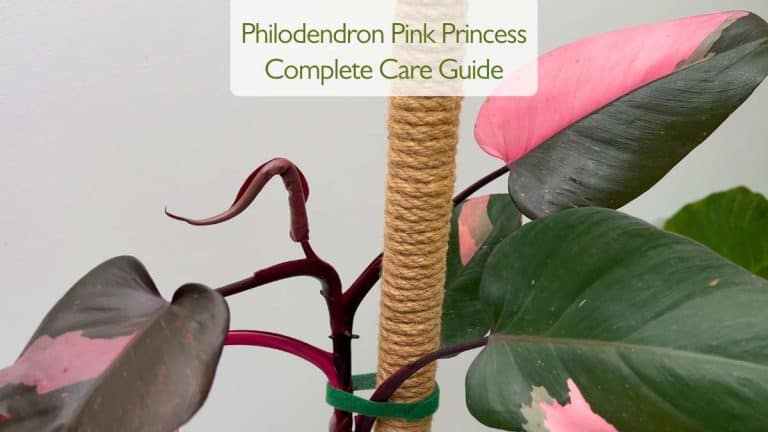Philodendron Prince of Orange Care: All You Need to Know
The Philodendron Prince of Orange is one of the most striking hybrids in the philodendron family. Known for its vibrant new leaves that emerge in shades of orange, then mature into yellow and finally deep green, this plant adds a constant splash of color to your indoor jungle. Compact and upright in growth, it’s also one of the easiest philodendrons to manage indoors.
But just like any tropical plant, it thrives best when you understand its needs. In this guide, I’ll cover everything about Philodendron Prince of Orange care – from light and water to soil, fertilizer, humidity, repotting, and common problems – so your plant can grow healthy and show off its amazing colors all year round.

Light Requirements for Philodendron Prince of Orange Care
Light is one of the most important factors in Philodendron Prince of Orange care because it directly influences the color of its leaves. This hybrid loves bright, indirect light, and the more light it receives (without burning), the more vivid the new orange and yellow leaves will appear before they mature into green.
I keep my Prince of Orange a few feet away from a south-facing window. This placement gives the plant plenty of strong, bright light throughout the day, but the distance softens the intensity so the leaves don’t scorch. It’s the perfect balance – close enough to get maximum brightness, yet far enough to avoid the harsh midday sun.
The results were easy to notice. The plant started pushing out larger, healthier leaves, and the colors became more intense and long-lasting. In lower-light conditions, the leaves turn greener much faster, and growth slows down. With strong but indirect light, each new leaf glows with shades of orange and gold for much longer before fading.
👉 The takeaway: the Philodendron Prince of Orange thrives when it receives as much bright light as possible, provided it’s filtered or softened by a little distance from the window. If you can’t give it southern exposure, a grow light or bright east- or west-facing window will also keep the colors bold.
Watering Philodendron Prince of Orange Care
Watering is a key part of Philodendron Prince of Orange care, and it changes a lot depending on how much light your plant gets. This hybrid likes its soil to stay evenly moist but never soggy. Too much water causes root rot, while letting it dry out completely will stress the plant and cause drooping or browning.
The best method is to check the soil before watering. Stick your finger about an inch deep – if it feels dry, it’s time to water. When you do, water thoroughly until liquid drains from the bottom, and make sure the pot never sits in standing water.
From my own experience, keeping the Prince of Orange a few feet away from a south-facing window means it receives a lot of bright light throughout the day. This makes the plant grow faster, and as a result, the soil dries more quickly. During summer, I often watered every 3–4 days, because the potting mix would dry out fast in those bright, warm conditions. In winter, when growth slows and the light is weaker, watering drops to about once every 10–12 days.

👉 The important part of Philodendron Prince of Orange care is adjusting watering to the plant’s environment. In brighter, warmer spots, it will need water more often. In cooler or lower-light rooms, it will need less. Always let the plant, not the calendar, guide your watering routine.
Best Soil for Philodendron Prince of Orange Care
The Philodendron Prince of Orange needs a well-draining aroid mix that provides plenty of airflow to the roots while holding just enough moisture to stay evenly hydrated. Regular potting soil is too heavy for this plant and can easily lead to root rot, so a chunky, airy mix is always the best choice.
I prepare my own custom aroid mix at home, and it works beautifully for philodendrons, anthuriums, monsteras, and other tropical plants. Instead of listing ingredients here, I’ve created a full guide showing exactly how I mix it and why it works so well. Watch my video:
👉 Refresh the soil at least once a year in spring, especially if you fertilize often. Repotting not only gives the plant fresh nutrients but also removes fertilizer salts that build up in the mix. And don’t forget: always use a pot with drainage holes, because even the best mix can’t save a plant from sitting in stagnant water.
Repotting Philodendron Prince of Orange Care
The Prince of Orange grows steadily but doesn’t need constant repotting. Repot every 1–2 years or when you notice roots circling the bottom of the pot. Always choose a pot with drainage holes and go only one size up – this plant actually enjoys being a little snug.
When repotting, refresh the soil completely to prevent salt buildup from fertilizers. This yearly reset in spring is a simple but powerful part of Philodendron Prince of Orange care that keeps the roots healthy and active.
Fertilizing Philodendron Prince of Orange Care
This philodendron is a moderate to heavy feeder because it’s constantly producing new leaves. During the growing season (spring and summer), feed with a balanced liquid fertilizer diluted to half every 2–3 weeks.
As I noticed, feeding regularly made a huge difference in color intensity. The new leaves came out brighter, stayed orange for longer, and the plant looked healthier overall. If fertilized too rarely, the leaves appeared smaller and faded quickly to green.
In fall and winter, reduce feeding to once per month. If you prefer natural methods, try my Homemade Organic Fertilizer Recipe, which supports steady growth without chemical buildup.
👉 Regular feeding is one of the most important steps in Philodendron Prince of Orange care, as it directly influences both growth and leaf coloration.

Propagation of Philodendron Prince of Orange
Unlike many philodendrons, the Prince of Orange cannot be propagated by stem cuttings in the usual way because it grows from a central rosette. Instead, propagation is done through division when repotting. Carefully separate offsets with roots attached and plant them in fresh soil.
It’s slower than other philodendrons, but still a rewarding way to create new plants. Propagation by division is a practical part of Philodendron Prince of Orange care if you want to multiply your collection.
Common Problems in Philodendron Prince of Orange Care
Even though this is a hardy hybrid, problems can still appear:
- Yellow leaves: Often from overwatering or inconsistent watering.
- Brown edges: Low humidity, underwatering, or fertilizer burn.
- Faded colors: Not enough light or nutrients.
- Slow growth: Usually caused by low light or compacted soil.
Most of these issues are solved quickly once you adjust the basics of Philodendron Prince of Orange care – light, water, soil, and feeding.

Is Philodendron Prince of Orange Pet Safe?
Like most philodendrons, the Prince of Orange is toxic to pets if ingested, due to calcium oxalate crystals. Keep it away from cats and dogs, and always wear gloves when pruning if you have sensitive skin. For safer alternatives, see my list of Pet-Friendly Houseplants.
Related Topics
Final Thoughts on Philodendron Prince of Orange Care
The Philodendron Prince of Orange care routine is easy once you learn its needs: bright, indirect light (or acclimated direct sun), evenly moist soil, high humidity, and steady feeding. In return, it rewards you with a constant display of glowing orange, yellow, and green leaves that change as they mature.
If you’re looking for a philodendron that’s compact, colorful, and easier to manage than climbing varieties, the Prince of Orange is the perfect choice. With the right care, it will brighten your home with its tropical charm all year long.
Click here to watch the video on YouTube
Explore More Music for Your Plants & Stay Connected!
Check out my Playlist: Music for Plants and find the perfect tunes to help your plants and yourself thrive.
Don’t forget to visit my YouTube Channel Plant House & Garden and subscribe — your support means the world to me!
Connect with me on social media for more plant care tips and music updates: Instagram | Facebook | X | Pinterest | Reddit | TikTok
Love plants? Love music? Don’t miss out on new updates – hit subscribe and follow now to keep your plants happy and your space vibrant!







